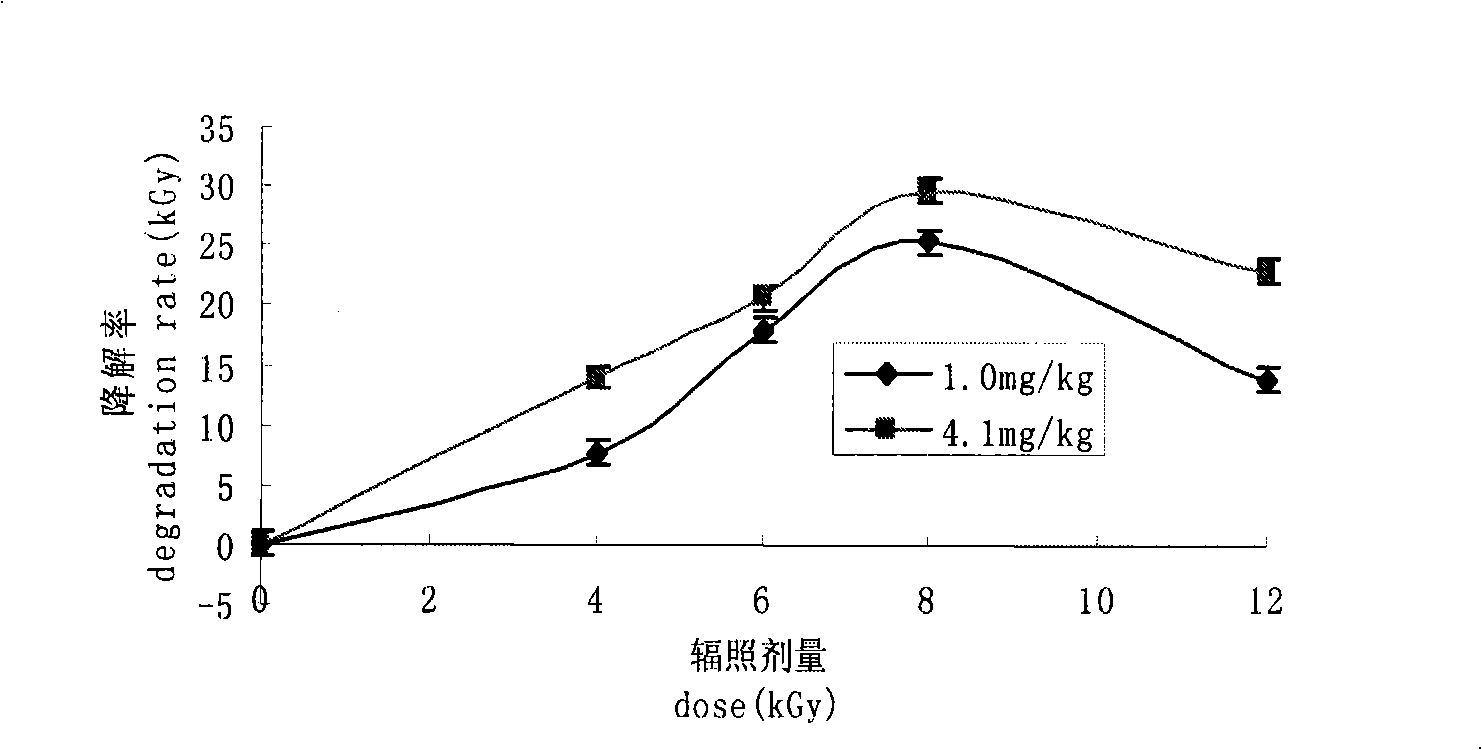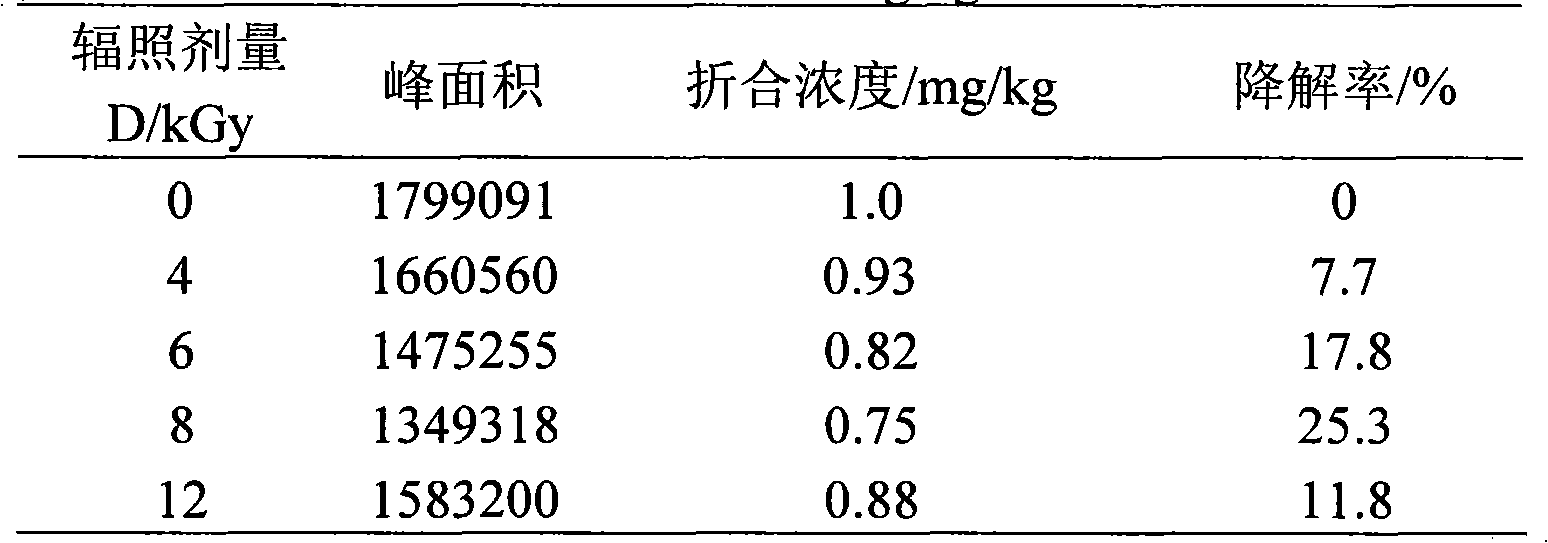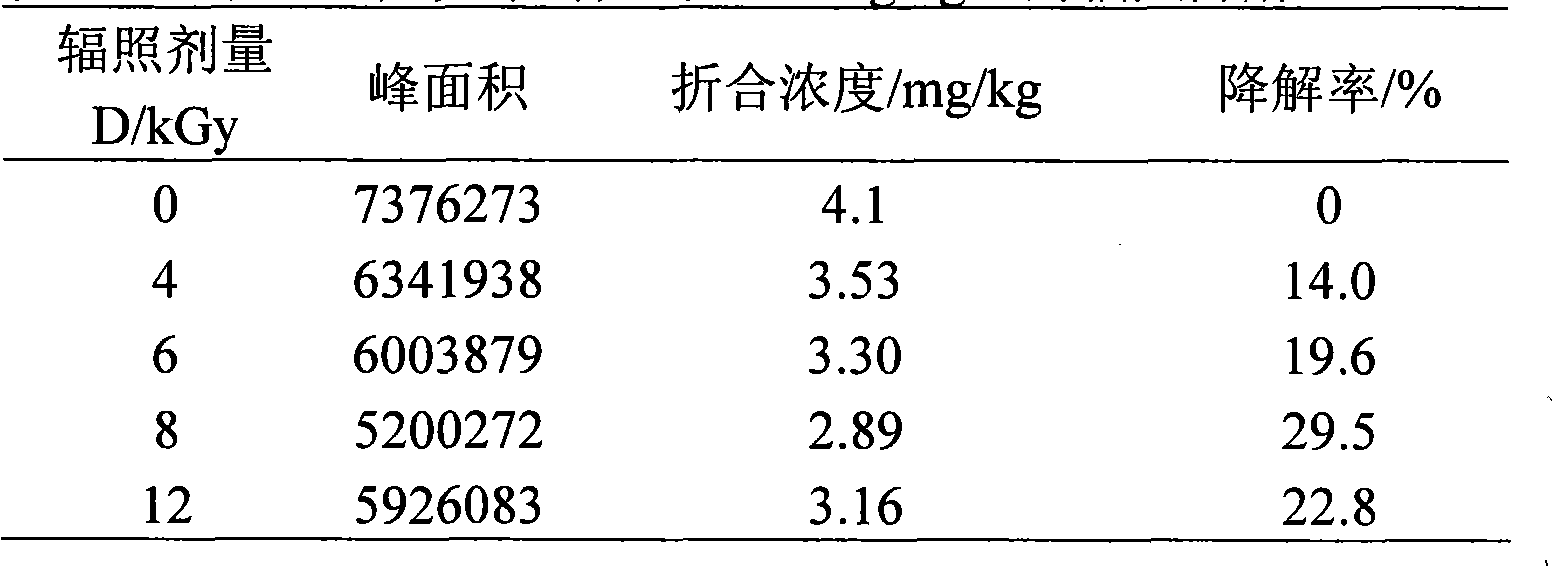Chlorpyrifos degradation method
A chlorpyrifos and sample technology, which is applied in the direction of protection devices against harmful chemical agents, can solve the problem of low degradation rate of chlorpyrifos residues, achieve the effect of no secondary pollution, simple process, and elimination of chemical pollutants
- Summary
- Abstract
- Description
- Claims
- Application Information
AI Technical Summary
Problems solved by technology
Method used
Image
Examples
Embodiment 1
[0010] Embodiment 1, carry out irradiation degradation to the residual chlorpyrifos in asparagus
[0011] The radiation source used in the present invention is the Institute of Atomic Energy Utilization, Chinese Academy of Agricultural Sciences. 60 Co-γ-ray irradiation source, the dose rate is 0.5kGy / h, and the absorbed dose is calibrated by a silver dichromate dosimeter. The dosimeter is compared with the Chinese Academy of Metrology and Sciences (NDAS), and the error is <±3%.
[0012] The models and places of production of various test instruments used in this embodiment are as follows:
[0013] GC-2010 gas chromatograph (Shimadzu, Japan), with electron capture detector (ECD) and manual injector, GC-2010 gas chromatography workstation (Japan); DB-1 quartz capillary column (30m × 0.25mm × 0.25 μm); RE-2000 type rotary evaporator (Shanghai Yarong Biochemical Instrument Factory); solid-phase extraction device (Supelco, U.S.); Florisil solid-phase extraction column (500mg, 3mL,...
Embodiment 2
[0033] Embodiment 2, carry out irradiation degradation to the residual chlorpyrifos in water
[0034] Adopt gamma ray to carry out irradiation degradation to contain 10mg / L chlorpyrifos aqueous solution and carry out gas chromatographic measurement according to the method identical with embodiment 1, know that when irradiation dosage is 4kGy, degradation rate can reach 95%, show that irradiation can effectively degrade water residual chlorpyrifos.
[0035] The chlorpyrifos aqueous solution that initial concentration is 5.0mg / L, is placed in 60 Irradiation degradation was carried out in a Co-γ-ray irradiation source, and the irradiation doses were 0kGy, 2kGy, 4kGy, 6kGy, 8kGy and 12kGy, respectively. Three repetitions were set for each dose point, and the average value was taken. According to the peak area data in GC-ECD, the degradation rate of chlorpyrifos in aqueous solution under different absorbed radiation doses was calculated, and the calculation formula was:
[0036] ...
PUM
 Login to View More
Login to View More Abstract
Description
Claims
Application Information
 Login to View More
Login to View More - R&D
- Intellectual Property
- Life Sciences
- Materials
- Tech Scout
- Unparalleled Data Quality
- Higher Quality Content
- 60% Fewer Hallucinations
Browse by: Latest US Patents, China's latest patents, Technical Efficacy Thesaurus, Application Domain, Technology Topic, Popular Technical Reports.
© 2025 PatSnap. All rights reserved.Legal|Privacy policy|Modern Slavery Act Transparency Statement|Sitemap|About US| Contact US: help@patsnap.com



